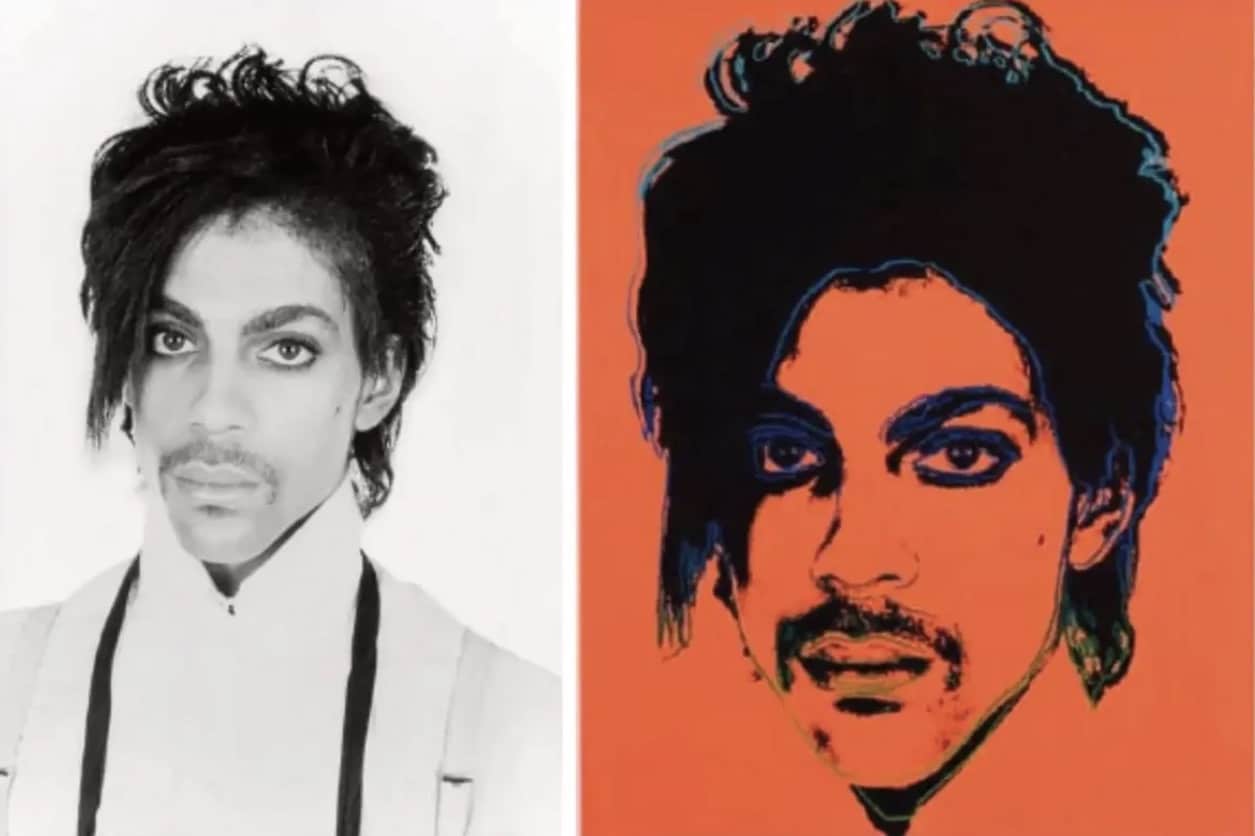The United States Supreme Court has ruled (18 May) that “To avoid copyright infringement by a second artist who bases a new work on an earlier one, they must have a compelling justification to use the first image where the two works have similar commercial use”.
This final decision ends the dispute over whether the Andy Warhol Foundation for the Visual Arts (AWF) infringed the copyright held by the well-known photographer Lynn Goldsmith. The image which had been treated in Warhol’s style was commissioned by Vanity Fair magazine. Warhol created the image based on a Goldsmith photo taken in the 1980s of the ‘Pop Star’ Prince. The paintings from this late series by Warhol sell for millions of dollars.
The Andy Warhol Foundation vs Lynn Goldsmith case refers to a legal dispute between the Andy Warhol Foundation for the Visual Arts and photographer Lynn Goldsmith. The case revolves around a series of artworks created by Andy Warhol based on a photograph taken by Goldsmith.
In the 1980s, Lynn Goldsmith captured a black-and-white photograph of the musician Prince. In 1984, Andy Warhol created a series of screen-printed artworks based on Goldsmith’s photograph. These artworks were part of Warhol’s “Prince Series” and were exhibited and sold as part of his artistic output.
According to Supreme Court records, “In 2016, petitioner Andy Warhol Foundation for the Visual Arts, Inc. (AWF) licensed to Condé Nast for $10,000 an image of “Orange Prince”—an orange silkscreen portrait of the musician Prince created by ‘Pop Artist’ Andy Warhol—to appear on the cover of a magazine commemorating Prince. Orange Prince is one of 16 works now known as the Prince Series that Warhol derived from a copyrighted photograph taken in 1981 by respondent Lynn Goldsmith, a professional photographer. Newsweek commissioned Goldsmith in 1981 to photograph a then “up and coming” musician named Prince Rogers Nelson, after which Newsweek published one of Goldsmith’s photos along with an article about Prince. Years later, Goldsmith granted a limited license to Vanity Fair for using one of her Prince photos as an “artist reference for an illustration.” The license terms included that the use would be for “one time” only. Vanity Fair hired Warhol to create the illustration, and Warhol used Goldsmith’s photo to create a purple silkscreen portrait of Prince, which appeared with an article about Prince in Vanity Fair’s November 1984 issue. The magazine credited Goldsmith for the “source photograph” and paid her $400. After Prince died in 2016, Vanity Fair’s parent company (Condé Nast) asked AWF about reusing the 1984 Vanity Fair image for a special edition magazine that would commemorate Prince. When Condé Nast learned about the other Prince Series images, it opted instead to purchase a license from AWF to publish Orange Prince. Goldsmith did not know about the Prince Series until 2016 when she saw Orange Prince on the cover of Condé Nast’s magazine. Goldsmith notified AWF of her belief that it had infringed her copyright. AWF then sued Goldsmith for a declaratory judgment of noninfringement or, in the alternative, fair use. Goldsmith counterclaimed for infringement. Goldsmith filed a lawsuit against the Andy Warhol Foundation, arguing that Warhol’s use of her photograph infringed upon her copyright. Goldsmith claimed that the Warhol artworks were derivative works and that she had not granted permission for their creation or use.”
The case raised important legal questions regarding the boundaries of fair use, transformative works, and copyright infringement in the context of visual art. It also prompted discussions about the nature of Warhol’s artistic process and his work’s use of pre-existing images.
In 2019, a federal district court ruled in favour of Lynn Goldsmith, stating that Warhol’s Prince artworks did not sufficiently transform the original photograph and therefore constituted copyright infringement. However, in 2021, the Second Circuit Court of Appeals overturned the lower court’s decision, ruling that Warhol’s use of Goldsmith’s photograph was transformative and constituted fair use.
The case highlights the complexities and challenges in determining the boundaries of copyright law within the context of visual art, particularly when it comes to appropriation and transformative works.
Top Photo: Left: Lynn Goldsmith’s 1981 photograph of Prince, right, Andy Warhol created 1984 image © Court Documents


